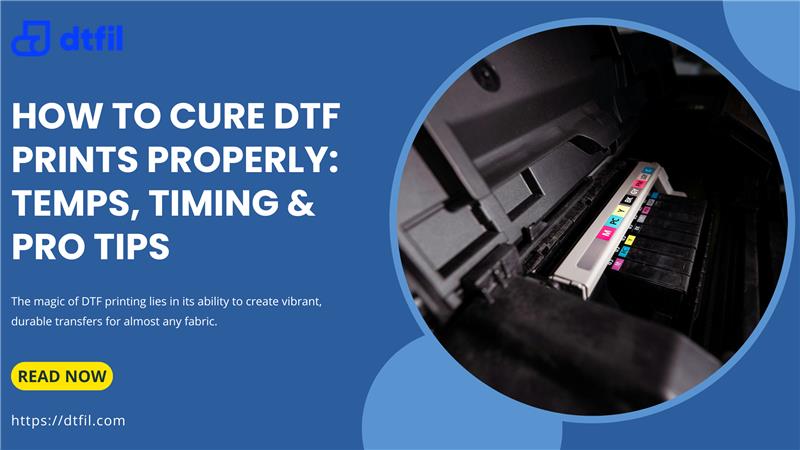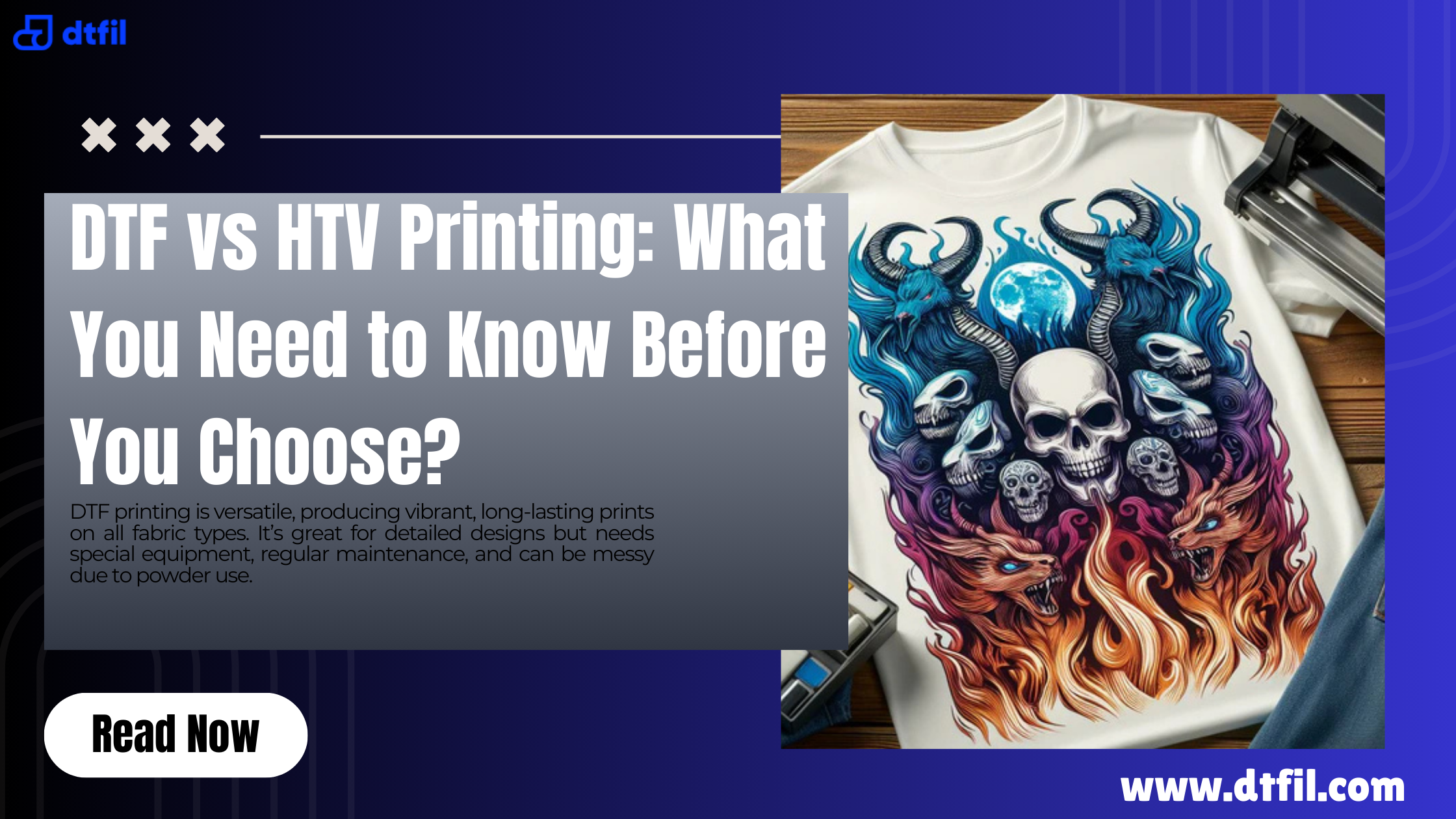Direct-to-Film (DTF) printing is becoming increasingly popular among small businesses and hobbyists due to its versatility, high-quality output, and cost-effectiveness. If you're considering starting a DTF printing business or adding DTF capabilities to your existing operations, it's essential to understand the costs and budget considerations involved. This guide will help you navigate through DTF pricing, including equipment costs, supplies, and other expenses, to ensure you can make informed decisions and maximize your investment.
Introduction to DTF Printing
DTF printing is a process that involves printing designs onto a special film and then transferring these designs onto various fabrics using heat. This method offers several advantages, such as the ability to print on a wide range of materials, including cotton, polyester, and blends, as well as on both light and dark fabrics.
Also Read: History of DTF Printing Techniques
Initial Investment: DTF Transfer Equipment
When considering the cost of DTF printing, the initial investment in equipment is one of the most significant factors. Here's a breakdown of the essential DTF transfer equipment and their approximate costs:
-
DTF Printer
The printer is the core of your DTF setup. DTF printers come in various sizes and capabilities, and prices can vary significantly based on these factors.
- Entry-Level DTF Printers: These are suitable for small businesses or hobbyists. Prices typically range from $1,000 to $3,000.
- Mid-Range DTF Printers: These offer more features and better performance. Prices generally range from $3,000 to $10,000.
- High-End DTF Printers: These are for large-scale operations and high-volume printing. Prices can exceed $20,000.
-
Heat Press
A heat press is essential for transferring the printed designs from the film to the fabric. The cost of a heat press depends on its size and functionality.
- Basic Heat Presses: Suitable for small-scale operations, costing between $200 and $500.
- Professional Heat Presses: Larger and more versatile presses cost between $500 and $9,000.
-
Curing Oven
The curing oven is used to cure the adhesive powder on the printed film, ensuring a strong bond between the print and the fabric.
- Basic Curing Ovens: These can cost between $500 and $1,000.
- Professional Curing Ovens: Larger and more efficient ovens range from $1,000 to $9,000.
-
Film and Inks
Consumables like DTF film and inks are recurring costs that need to be factored into your budget.
- DTF Film: Costs around $1 to $3 per sheet, depending on size and quality.
- DTF Inks: Prices vary, but a liter of ink typically costs between $100 and $200.
Ongoing Costs and Maintenance
In addition to the initial investment in equipment, there are ongoing costs and maintenance requirements to consider:
-
Consumables
Regular purchases of film, inks, and adhesive powder are necessary to keep your DTF operations running smoothly.
- Adhesive Powder: Costs around $20 to $50 per kilogram.
- Cleaning Supplies: Needed to maintain equipment, typically costing $10 to $30 per month.
-
Maintenance
Regular maintenance of your DTF equipment is crucial to ensure longevity and consistent print quality.
- Routine Maintenance: Includes cleaning print heads, replacing worn-out parts, and general upkeep. Costs can range from $50 to $200 per month.
- Replacement Parts: Print heads, rollers, and other parts may need to be replaced periodically. Costs vary depending on the part and printer model.
-
Software and Training
Investing in design software and training for operating DTF equipment can also add to your costs.
- Design Software: Adobe Photoshop, CorelDRAW, or specialized RIP software can cost between $20 and $50 per month.
- Training: Initial training for using DTF equipment may cost between $100 and $1500, depending on the provider and depth of training.
Also Read: Step-by-Step Guide to DTF Transfer Process
Cost Analysis and Return on Investment (ROI)
Understanding the cost structure of DTF printing is essential for calculating your potential return on investment (ROI). Here are some key points to consider:
-
Cost Per Print
Calculating the cost per print helps you determine pricing strategies and profitability.
- Materials Cost: Includes film, ink, and adhesive powder.
- Labor Cost: Time spent on design, printing, and transferring.
- Overhead Cost: Equipment depreciation, maintenance, and utilities.
For example, if the materials for one DTF print cost $2, labor costs $1, and overhead costs $1, your total cost per print is $4. If you sell each print for $10, your profit per print is $6.
-
Break-Even Point
The break-even point is the number of prints you need to sell to cover your initial investment and ongoing costs.
- Initial Investment: Sum of all equipment costs.
- Ongoing Costs: Monthly consumables, maintenance, and other expenses.
If your initial investment is $10,000 and your monthly ongoing costs are $500, and you make $6 profit per print, you would need to sell approximately 1,667 prints to break even.
-
ROI Calculation
ROI measures the profitability of your investment over a specific period.
- ROI Formula: (Total Revenue−Total Costs)/Total Costs×100%
For example, if your total revenue over a year is $30,000 and your total costs are $20,000, your ROI is 50%.
Maximizing ROI in DTF Printing
Maximizing the return on investment (ROI) in DTF printing involves several key strategies that can help you make the most out of your equipment and resources. Here are some effective ways to ensure you get the best ROI from your DTF printing business:
-
Invest in Quality Equipment
Choose affordable but reliable DTF transfer printers and supplies to minimize maintenance costs and downtime. This ensures long-term savings and consistent performance.
-
Buy Supplies in Bulk
Purchasing DTF films, inks, and other consumables in bulk can reduce costs and ensure you always have the necessary materials, preventing production delays.
-
Optimize Workflow
Streamline your workflow to enhance productivity and reduce labor costs. Efficient processes and regular equipment maintenance lead to smoother operations and cost savings.
-
Diversify Product Offerings
Expand your range of products to attract a broader customer base. DTF printing allows for high-quality prints on various substrates, opening new revenue streams.
-
Set Competitive Prices
Conduct market research to set prices that cover costs while providing a healthy profit margin. Competitive pricing attracts customers and ensures profitability.
-
Focus on Customer Satisfaction
Provide excellent customer service and high-quality prints to build a loyal customer base. Happy customers lead to repeat business and referrals.
-
Invest in Marketing
Promote your DTF printing business through social media, online advertising, and local marketing to increase visibility and attract new customers.
-
Monitor Performance
Regularly review business performance to identify areas for improvement. Track production costs, sales, and customer feedback to make informed decisions and stay competitive.
Maximizing ROI in DTF printing involves a combination of smart purchasing, efficient operations, diverse offerings, strategic pricing, excellent customer service, effective marketing, and continuous performance monitoring. By implementing these strategies, you can ensure your DTF printing business remains profitable and competitive in the market.
FAQs
How much does it cost to make a DTF transfer?
The cost to make a DTF transfer varies based on materials and equipment used, typically ranging from $1 to $3 per transfer, including ink, film, and powder.
What equipment is needed for DTF printing?
DTF printing requires a DTF printer, heat press, DTF transfer film, DTF ink, and adhesive powder. Additional tools like a curing oven may also be used.
What kind of printer do I need for DTF transfers?
For DTF transfers, you need a specialized DTF printer that can handle DTF inks and transfer films, such as modified inkjet printers designed for DTF printing.
What do I need to start doing DTF transfers?
To start DTF transfers, you need a DTF printer, heat press, DTF transfer film, DTF ink, adhesive powder, and design software. A curing oven and powder shaker can enhance efficiency.








